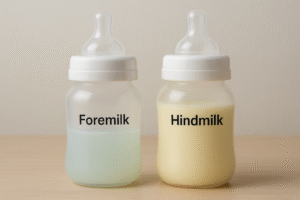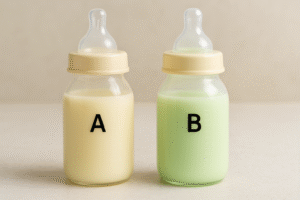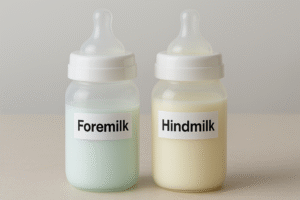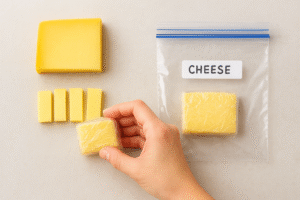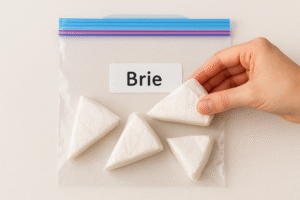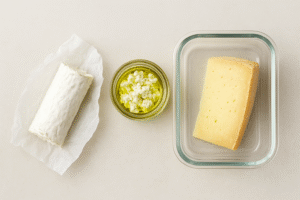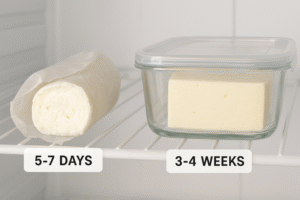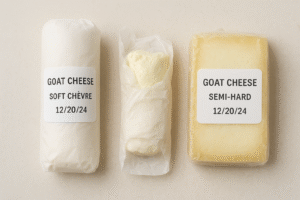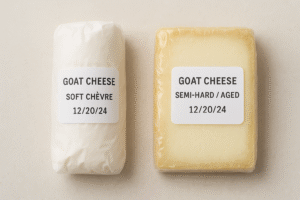Why People Compare Goat Milk and Cow Milk
For generations, cow milk has been the most common dairy choice for families in the United States. However, with the growing popularity of goat milk, many consumers now wonder — what’s the real difference between the two? While both are excellent sources of calcium, protein, and essential nutrients, they vary in flavor, digestibility, and nutritional structure. Understanding these differences helps you make a healthier, more informed choice for your lifestyle.
👉 Curious about taste? Check out What Does Goat Milk Taste Like?
How Each Milk Is Produced and Processed
Cow milk is mass-produced across the U.S., collected from large dairy farms, and commonly pasteurized for safety. Goat milk, on the other hand, is often produced in smaller batches, with less industrial processing. This difference in handling gives goat milk a fresher, creamier texture and a naturally homogenized consistency.
Because goat milk fat globules are smaller, the cream doesn’t separate easily, giving it a smooth mouthfeel without artificial homogenization. Cow milk is usually mechanically homogenized to achieve that uniformity. This is one of the first visible distinctions between the two.
Nutritional Differences: What’s Inside the Glass
Both types of milk contain similar core nutrients — calcium, protein, and vitamins — but their proportions vary slightly.
Goat milk generally has higher levels of vitamin A, potassium, and healthy fats, while cow milk provides slightly more vitamin B12 and folate. Goat milk’s medium-chain fatty acids (like capric and caprylic acid) are more easily digested and converted into energy, making it lighter on the stomach.
Cow milk contains more long-chain fatty acids, which can feel heavier for some people but also provide sustained energy. Both types offer strong bone health benefits and support muscle repair, making them essential in a balanced diet.
Digestibility and Lactose Tolerance
One of the most important differences lies in digestion. Goat milk has smaller fat and protein molecules, making it easier to digest for people with mild lactose intolerance. It also contains slightly less lactose than cow milk, reducing the chance of bloating or discomfort.
Cow milk, while nutritious, contains a higher percentage of A1 beta-casein protein, which some individuals find harder to digest. Goat milk is rich in A2-type protein, known to be gentler on the digestive system. This is why many Americans who struggle with cow milk find goat milk more comfortable to drink.
Health Benefits: Which One Wins?
Both goat and cow milk offer impressive health benefits. Goat milk supports gut health with natural prebiotics and aids in better nutrient absorption. It’s also known to improve skin condition thanks to vitamin A and lactic acid.
Cow milk, on the other hand, provides stronger muscle recovery support due to its higher vitamin B12 and complete amino acid profile. It also has a slightly higher protein content per serving, which can be beneficial for active lifestyles.
The choice depends on your personal needs — goat milk for better digestion and skin benefits, cow milk for higher endurance and muscle support.
👉 To learn about overall health advantages, read Is Goat’s Milk Good for You? (Health Benefits & Nutrition Facts)
Taste and Texture Differences
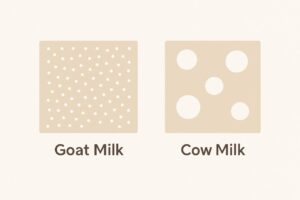
Goat milk has a mild, creamy, and slightly tangy flavor, while cow milk is neutral and subtly sweet. Goat milk feels smoother and lighter because of its smaller fat globules. Cow milk’s taste is more familiar and universally accepted, making it ideal for coffee, cereal, and cooking.
If you’re new to goat milk, start with chilled, pasteurized varieties to experience its clean flavor without any “barnyard” notes. Once accustomed, many people prefer it for its natural freshness and gentle richness.
Safety and Storage Recommendations
Both types of milk require proper refrigeration to maintain freshness. Keep them stored below 38°F (3°C) and consume within 5–7 days after opening. Goat milk spoils a bit faster because it’s less processed, so always buy small quantities and refrigerate immediately after use.
Pasteurized cow milk has a longer shelf life but loses some of its natural enzymes due to heat treatment. If you’re buying raw milk (from either source), ensure it’s from a certified, hygienic farm following U.S. safety regulations.
Expert Opinion and Reliable Sources
According to the Mayo Clinic, both goat and cow milk are nutritionally beneficial when consumed safely. People sensitive to lactose or A1 proteins may find goat milk a gentler option.
A report by Healthline further highlights that goat milk’s naturally homogenized fat structure helps smoother digestion and better nutrient absorption.
FAQ: Common Questions About Goat vs Cow Milk
Q1: Is goat milk healthier than cow milk?
Both are healthy, but goat milk is easier to digest and contains more vitamin A and potassium, while cow milk offers more B12 and folate.
Q2: Which milk is better for lactose intolerance?
Goat milk is slightly lower in lactose and contains A2 proteins, making it easier to digest for most sensitive individuals.
Q3: Why does goat milk taste different from cow milk?
The unique fatty acids in goat milk give it a mild tang, while cow milk is sweeter and more neutral in flavor.
Q4: Can I use goat milk and cow milk interchangeably in cooking?
Yes. Both can be used for baking, sauces, and beverages, but goat milk adds a richer, creamier texture.
Q5: Which milk is better for children or the elderly?
Goat milk is softer on digestion and ideal for older adults, while cow milk provides more overall protein and energy for active children.
Conclusion: Choosing the Milk That Fits Your Life
The difference between goat milk and cow milk comes down to more than taste — it’s about how your body feels after drinking it. Goat milk is lighter, easier to digest, and rich in natural vitamins, while cow milk remains the classic choice for high protein and energy. Both are excellent, but your choice depends on your health needs, taste preference, and digestion comfort. For many U.S. consumers, alternating between the two gives the perfect balance of nutrition and satisfaction.


